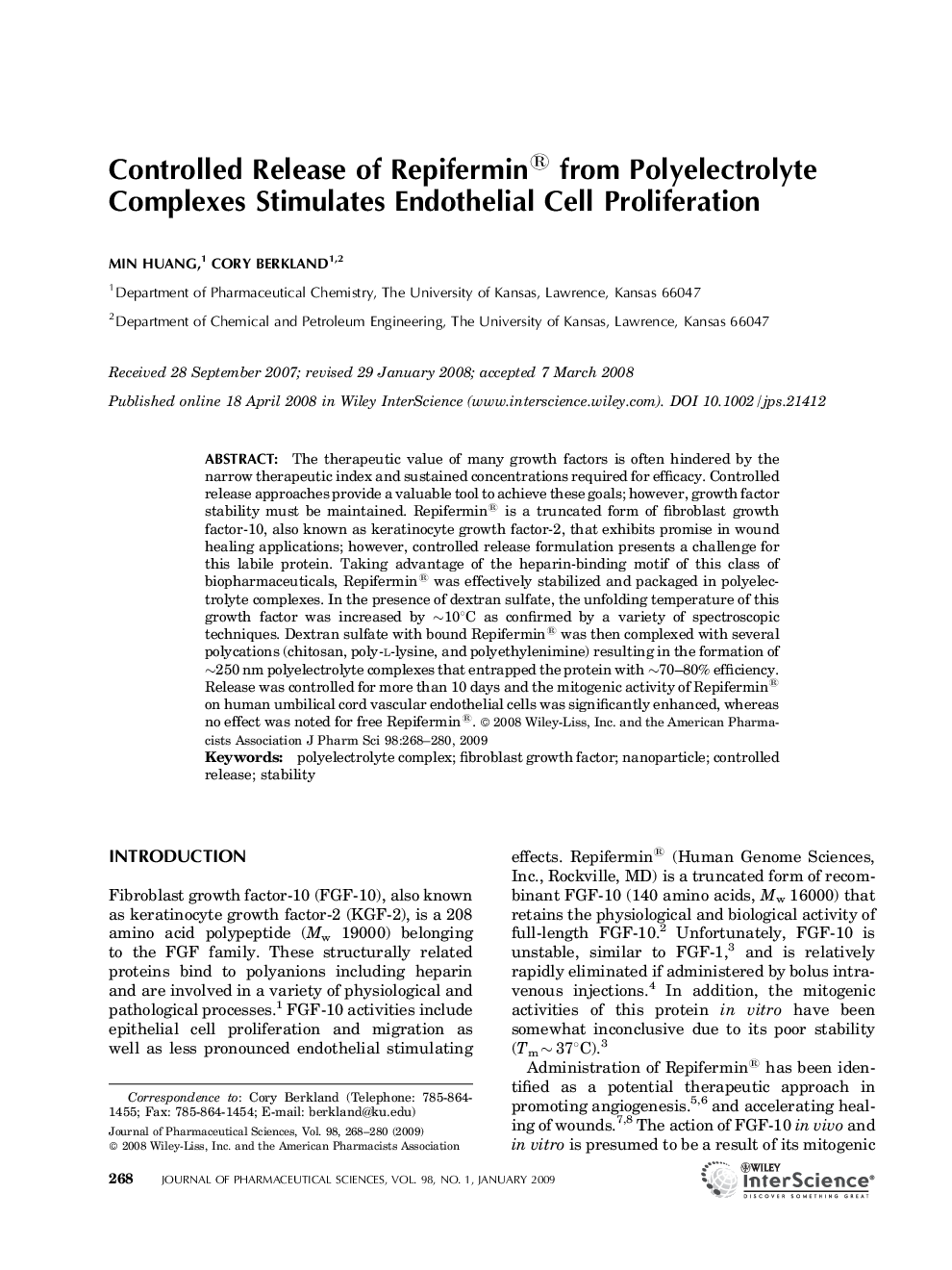| Article ID | Journal | Published Year | Pages | File Type |
|---|---|---|---|---|
| 2487230 | Journal of Pharmaceutical Sciences | 2009 | 13 Pages |
Abstract
The therapeutic value of many growth factors is often hindered by the narrow therapeutic index and sustained concentrations required for efficacy. Controlled release approaches provide a valuable tool to achieve these goals; however, growth factor stability must be maintained. Repifermin® is a truncated form of fibroblast growth factor-10, also known as keratinocyte growth factor-2, that exhibits promise in wound healing applications; however, controlled release formulation presents a challenge for this labile protein. Taking advantage of the heparin-binding motif of this class of biopharmaceuticals, Repifermin® was effectively stabilized and packaged in polyelectrolyte complexes. In the presence of dextran sulfate, the unfolding temperature of this growth factor was increased by â¼10°C as confirmed by a variety of spectroscopic techniques. Dextran sulfate with bound Repifermin® was then complexed with several polycations (chitosan, poly-L-lysine, and polyethylenimine) resulting in the formation of â¼250 nm polyelectrolyte complexes that entrapped the protein with â¼70-80% efficiency. Release was controlled for more than 10 days and the mitogenic activity of Repifermin® on human umbilical cord vascular endothelial cells was significantly enhanced, whereas no effect was noted for free Repifermin®. © 2008 Wiley-Liss, Inc. and the American Pharmacists Association J Pharm Sci 98:268-280, 2009
Related Topics
Health Sciences
Pharmacology, Toxicology and Pharmaceutical Science
Drug Discovery
Authors
Min Huang, Cory Berkland,
